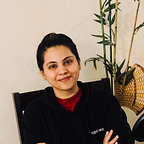Codewave experiments: How we created a culture of symbiotic performance nudging & healthy profit sharing
When we started Codewave, we wanted it to be the grandest social experiment ever, grounded on human transformation. We believed the ultimate purpose of work, was to take you home to your greatest self. And our greatest disruption so far, has been in the way we looked at people.
We dreamt of an organization that operated like a social network.
With enough autonomy to unleash creativity and enough structure to eliminate needless chaos. Organically growing at every moment of opportunity. Creating high impact project journeys with customers.
We imagined an environment where symbiosis & organic growth is celebrated. Where individuals are free to be their whole authentic selves and candidly influence the “why” — whichever role or responsibility they’re on.
Peerly is our framework for continuous growth through peer to peer performance nudging.
Being a design & technology services company, we got an opportunity to take up multiple projects for a variety of customers.
When a new project opportunity came in, we let people decide on the team composition — cluster size & dynamics to serve in a way that best meets the demand. Agile way of working, requires high mental agility — and this we believe is best encouraged by allowing people to choose the cluster they want to grow with.
Each cluster, a microcosm — is a motivated group of people with a shared goal, that’s tightly aligned to make their project succeed — maintaining schedule, quality and profitability (with no need for any kind of authority to drive outcomes). Operating in an informal style — like a social network, gave the clusters comfort to collaborate & create outcomes in their own ways.
People in the cluster were free to jump into other struggling clusters and transform them, when needed.
Leadership Cafe’ a platform for self expression & social influence, was started to create opportunities every week for people to socialize ideas. Sometimes this also included external speakers.
In this organizational design, what we needed was simply performance “nudging”, not performance management. And an unwavering spirit that — we can’t leave anyone behind.
An individual’s performance would be organically nudged by peers, leads — at every moment of opportunity, through constructive dialogues and frequent retrospectives. We recognized growth is a daily affair, not yearly.
How do you recognize high performance in such environments?
Should all performance parameters be measurable? Is there merit in having indicators that are not measurable? These are the questions we had, as it’s extremely important to recognize and reward the right social behaviors.
We decided to have 5 performance parameters, to recognize, reward & promote individuals to higher levels of responsibility and unleash leadership potential. 3 out of the 5 were unmeasurable / intangible parameters.
Dependability, Competence, Ownership, Teamplay & Impact.
Link to the framework here.
Performance incentives — Design of monthly variable pay scheme and bi-annual promotion & pay upgrade.
We were extremely careful when it came to designing performance based incentives as we didn’t want “incentives” to be merely a fuel for people to complete what they started.
We wanted our incentives to drive greater social behaviors.
People in a cluster earn equal variable pay, when their project succeeds — irrespective of their function or role. People are incentivized to jump into struggling projects & transform them.
People are promoted & rewarded with a pay upgrade when peers say they are ready for the next level of responsibility.
A peerly panel is set up to review self-assessment, curate 360 feedback & summarize growth opportunity for people.
Pay discussions are separated from feedback discussions (for effectiveness), and distribution of funds allocated for pay upgrades is decided by the peerly panel.
The peerly panel members are chosen on basis of their overall social influence and empathy skills, not necessarily number of years of work experience and the members are changed every year to avoid bias. This means, an entry level professional could be on the peerly panel — if he/she has consistently demonstrated keen listening, empathy skills & positive social influence.
How does the company share profits?
Each project cluster is responsible for making their project profitable. A part of the profit from each cluster, goes into the “project kitty” which is then equally distributed among the cluster members as “monthly project bonus”. Remaining part of the profit goes into the “company kitty” which creates a company bonus component for everyone in the company, including the contributing cluster.
This means, higher the company bonus for an individual, healthier the business. Profit is shared on the go, rather than accumulated.
Codewave has been a thriving micro-economy, in the last 6.5 years of operations. By continuously evolving our performance nudging practices and design of incentives, we’ve learnt invaluable lessons in behavioral economics, organizational psychology and higher order human capital leadership, that can be of service to other communities and organizations.
Codewave is a design led technology development services company. Codewave has no managers. It adopts radical transparency, sharing the firms contract terms, margins and revenue with all its members. Performance review discussions happen among peers. All management practices are grounded on trust and common-sense. No silly office timings or vacation rules. It’s no surprise then that our culture is loved, attrition rates negligible and customer satisfaction high. Our practices are evoking a lot of interest and curiosity among modern day organizations.
